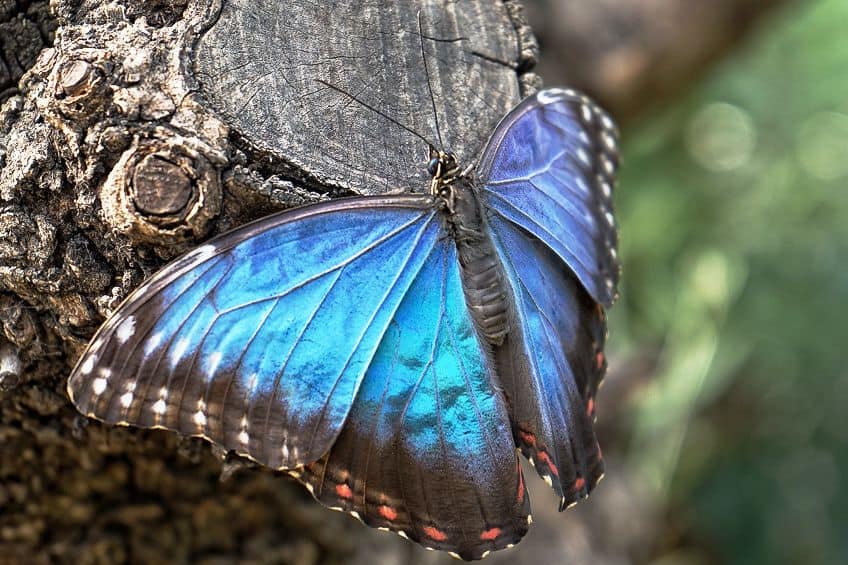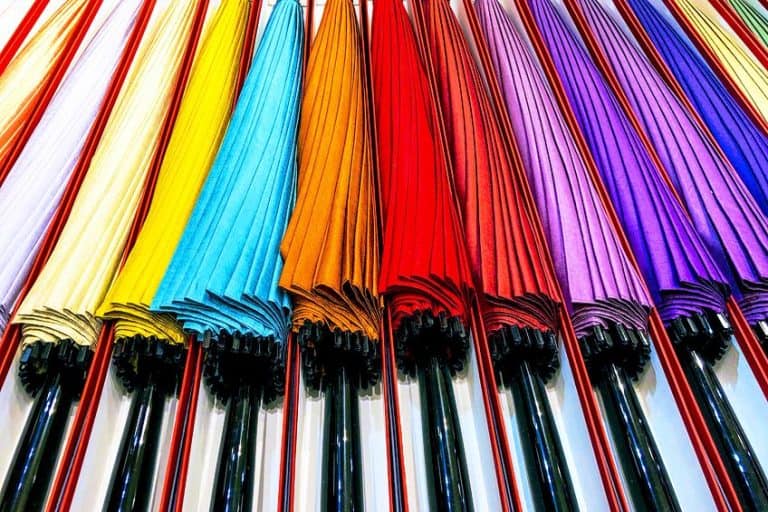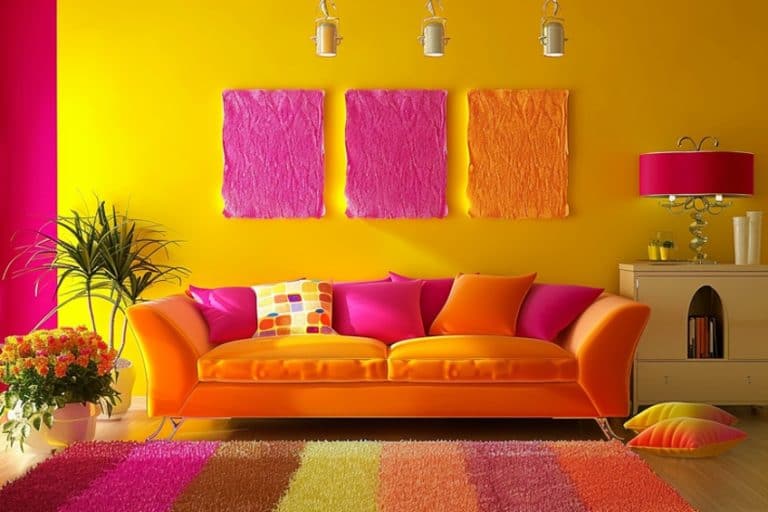Rarest Color in Nature – The Color That Is Mostly an Optical Illusion
Nature is full of dazzling colors ranging from green fields, yellow flowers, and red birds to the vast expanse of the blue sky and blue oceans. The last two give the impression that blue is a very common color in nature. However, if you remove the blue sky and water, there is not much left that is truly blue in nature. Considering all the hues found in nature that can be seen in plants, flowers, rocks, feathers, fur, and skins, blue is remarkably scarce. So, why is the blue color so rare in nature? Let us now discover the reason behind this surprising phenomenon below!
What Is the Rarest Color in Nature?
In the world today, many people choose blue as their favorite color. Many choose blue as their number-one color choice for painting houses and creating beautiful art pieces or making blue fashion choices and designing attractive graphic designs. Nature is full of amazing colors, such as green grass and leaves, and the browns and yellows of earth. These seem to be in abundance, however, blue in nature seems to be very rare. It has been reported that less than one out of ten flowers are blue, and there are even fewer animals that are blue. There are also very few birds and insects that are truly blue.
What is the rarest color in nature? It turns out that the blue color is very hard to come by in nature, and most color experts believe that blue is the rarest color in nature.
So, why is blue so rare in nature? In many instances, blue comes from patterns of scattered light, and it is an optical illusion, we are being deceived by not seeing the true color blue. Below is an example of a graphic pure blue that is 100 percent blue without any other colors in the RGB color code. Let us now delve into the reason behind blue being the rarest color in nature.
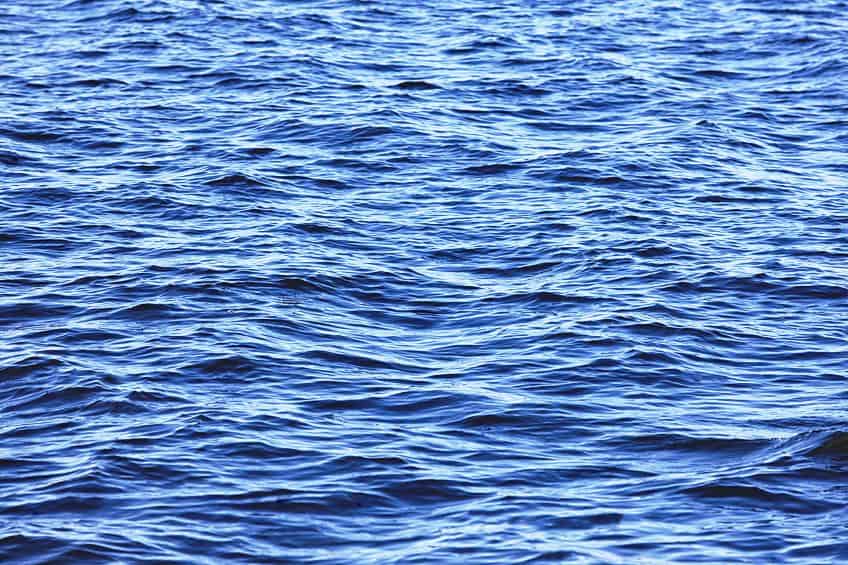
| Shade | Hex Code | CMYK Color Code (%) | RGB Color Code | Color |
| Pure Blue | #0000ff | 100, 100, 0, 0 | 0, 0, 255 |
Why Is Blue So Rare in Nature?
Most experts believe that blue is the rarest color in nature, however, most of the blue insects, flowers, and animals are not actually blue, and your eyes deceive you. What we are seeing is not the blue color itself, but patterns of scattered light. So, why is blue so rare in nature? All light comes in the form of electromagnetic energy, which is like waves traveling through a vacuum. The spectrum of light has both shorter and longer wavelengths and also includes radio waves and gamma rays. Radio and microwaves have the shortest and x-rays and gamma rays have the longest wavelengths. However, we only see the visible spectrum of light.
In the visible light spectrum, each color has a particular wavelength. Yellows and reds have long wavelengths, while violets and blues have short wavelengths. The color that you see with each wavelength reflects the color of that object.
Take a yellow flower, for example, it absorbs the red and blue color, together with other color wavelengths, and then produces a selective reflection of light to your eyes. The color receptors of your eyes translate the wavelength color and send signals to the brain, and we see yellow. Take another example, a blue blanket on your bed, when the sun shines through the window onto the blanket, the blanket will absorb all the wavelengths, except for the blue, which is then reflected to the eye, and you see a blue blanket. We, as humans, can see colors as our eyes have many light-sensitive cells known as rods and cones. Each one of these types of receptors is sensitive to certain color wavelengths, which include blue, green, or red. So, all of these receptors help to process the light and convert it into electrical nerve impulses, which are sent via the optic nerve to the brain. This information is then interpreted as the various shades of color.

Looking at a blue flower, for example, you see the flower as blue because it has absorbed the red part of the light spectrum. Newton is the one who discovered that colors are not inherent in objects, but that the surfaces rather absorb some colors and reflect others. The reflected colors are what we see. Only two percent of these receptors are sensitive to blue light, 64 percent are sensitive to red light and 32 percent are sensitive to green light. Blue is found in an abundance of foods, animals, and plants, but the blue color lacks a certain chemical compound that reflects the blue color, making the natural blue pigment in nature very rare.
Most of the natural blue colors that are found in food are not blue but purple, coming from a purple compound known as “anthocyanin”. The pigment that is found in plants contains a compound known as “chlorophyll”, which gives the plants their green color, and “anthocyanin” can also produce black and red in addition to purple and blue.
Blue in the Animal World
Not many animals in the animal kingdom are blue, only around one percent of animals are truly blue, according to research. The blue poisonous dart frog and the obrina olivewing butterfly are amongst the few animals that produce their own blue pigment. Most of the blue colors in the animal kingdom are not the result of chemical pigments, but rather the elements of physics when light bounces off its surface. This means that the blue animals you can see, such as the bluebird, or blue morpho butterfly are not really blue, but only appear to be blue. This is due to the arrangement of keratin molecules on the bird’s feathers that reflect the light, and the reflected wavelengths appear blue to your eyes.
What would happen if some of the feathers of the bluebird should fall to the ground? The feathers would no longer be able to reflect any blue wavelengths and the feathers would become grayish or brownish.

Some animals, like flamingos, for example, are born with gray feathers and gradually the color will shift to a vibrant pink color. This color comes from certain compounds in the food that they eat and they do not directly produce the color themselves. Shades of true blue in mammals, reptiles, insects, and fish are also rare as most of it is a reflection of light or the color is gained from elsewhere. Some examples include the blue whale, golden snub-nosed monkeys, blue mandrills, and even the platypus when exposed to ultraviolet rays show vivid shades of green and blue.
Blue in the Plant World
Blue pigment in nature is very difficult for plants to produce, making blue flowers very scarce. This can also be attributed to the limits of our own eyes, as the blue we generally see is not a true-blue color. Ancient Egyptians used the pigment from the blue lotus flower to color their jewelry and vases. Indigoid dye found in certain plants from ancient Peru was used to dye fabric about 6,000 years ago, and indigo blue dye produced from plants in India reached Europe in the 16th century and is still used today. In the world of plants, the blue color is produced by certain pigments referred to as anthocyanins that contain a compound referred to as chlorophyll that gives the plants their green color. However, this can also produce red, black, blue, and purple. Anthocyanins are highly unstable molecules that depend on acidity and other factors in their surroundings to produce color.
This process can be seen in the hydrangea plant, where the flower color is determined by the pH level of the soil. If the soil is acidic, the flowers will appear blue, and appear more pink when the soil’s pH level is neutral. This is due to the absorption of aluminum from the soil when it is acidic and the molecules move closer together, causing the flowers to look bluer. In alkali soil, the molecules move further apart, making the flowers look pinker.
For the plant to appear blue, several conditions need to be met, which is what makes blue plants very rare. Of the 300,000 plant species in the world, only ten percent of them are blue flowers. In 2017, a research team from Japan created a blue flower, which was done by adding a gene from a blue Canterbury bellflower to a chrysanthemum, giving a purplish color to the flower. They also took another gene from a butterfly pea blue flower, and the blue chrysanthemum was born. Researchers then discovered that an already existing compound within the flower interacted with the anthocyanins to produce the blue flower, meaning that it took three separate modifications to create a blue flower.

Looking at the visible light spectrum, red has long wavelengths, which indicates very low energy compared to other colors. So, to produce a blue flower, it requires a molecule that can absorb small amounts of energy for it to absorb the red of the light spectrum. Another reason why researchers are looking into creating blue flowers is that the blue color is highly visible to pollinators like bees. This gives the blue flowers an added evolutionary advantage over other types of flowers, producing blue blossoms in the ecosystems.
Blue in the Mineral World
Blue minerals, gems, and rocks have captured man’s imagination over the centuries with their amazing and unique hues and properties. Throughout history, these vibrant blue minerals and gems have been appreciated for their rarity and beauty. Here are some of the different types of these amazing natural masterpieces of blue gems, rocks, and minerals.

- Apatite: This deep royal blue gemstone is quite rare and is a favorite with art collectors as well as art jewelers.
- Sodalite: This gemstone has a royal blue coloration with a lighter shade than ultramarine and is found in large masses making it an ideal choice for sculptors and vases.
- Lapis Lazuli: This is a semi-precious rock with a deep blue color and has been used for many different types of artworks including a dye for painting that is still in use today.
- Turquoise: This is a light blue stone with a variable hardness and a range of hues from blue to teal, and cyan, and is associated with Native American tribes used for silversmithing.
- Sapphire: This blue gemstone is the most sought-after and famous of all gemstones in the world and its deep blue color has made it a must for jewelry making.
- Azurite: This is a rare and soft mineral that is found in a variety of forms, with its striking blue color. It is used as a pigment and can be cut, shaped, and polished as a gemstone, and is a marker for copper deposits.
- Aquamarine: This gemstone is a light blue gemstone that can also be found as a dark sky-blue beryl gemstone which loses its color when exposed to sunlight, it is quite hard making it ideal for polishing, and its distinctive clarity and color make it a favorite for jewelers.
- Chalcanthite: This is a crystallized form of copper sulfate and has a deep blue color, as a crystal, it forms in mines and caverns where copper is found, however, it is water-soluble which makes it a very hard mineral to collect as it keeps dissolving and needs to be stored and handled correctly.
There are numerous known mineral species and most of the rocks or stones are formed by a combination of just a few of these minerals, such as amphiboles, feldspar, micas, quartz, grenades, pyroxenes, and calcite. Many of these minerals, gems, and rocks are very rare, making them very expensive, only finding their way to professional art jewelers and art collectors.
Blue in the Human World
As we have already discussed, the blue color is very rare in nature, but in the human world, blue is very common and can be regarded as the most popular color. Human vision is an incredible thing, as we are all capable of seeing around a million different colors, but many do not perceive these colors in the same way. Blue is one of the primary colors and it can play a big role in our everyday lives, making it a powerful tool for us to harness.
Blue can reduce anxiety, lower blood pressure, decrease heart rate, and can leave you less stressed, calm, and relaxed.
Blue in Fashion
Blue can be both calming and on the other hand blue can represent something serious. It has a very wide range of meanings as there are many tints and shades. However, in fashion, blue is always popular, and you can never go wrong by choosing blue. You will always feel comfortable wearing blue just like other neutral colors like black, white, and gray.
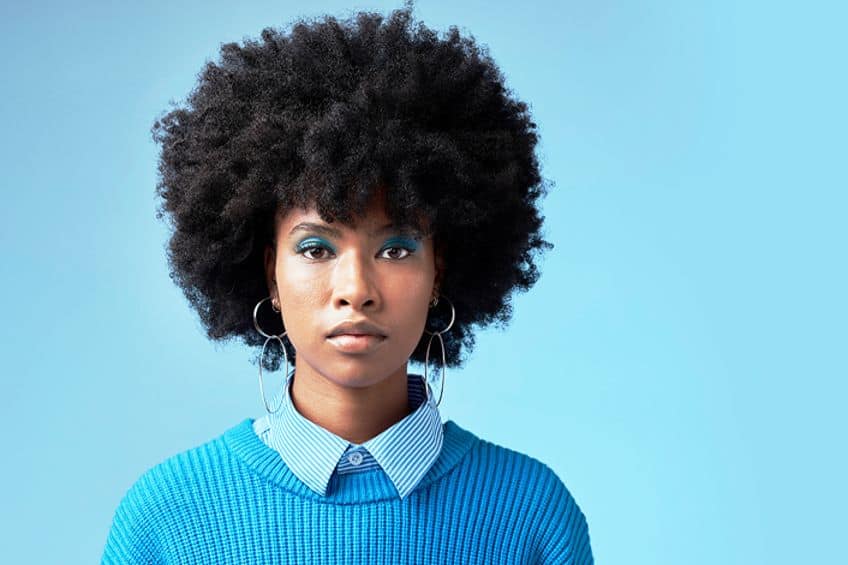
Blue in Art
Blue has always been associated with the arts and modern artists today still use blue in their artworks. Blue represents a wide range of emotions from evoking calm to producing a feeling of sadness, blue remains an important part of the modern art world, representing several themes and moods.
Blue in Home Décor
Blue is often a popular choice for bedroom, bathroom, and kitchen walls as it can be bold or bright, or soothing and soft. Blue is naturally a cool color and works with most other colors. However, a color combination that will never go out of style is blue paired with white.

We might consider blue a favorite color that can be found all around us, however, blue in nature is very rare. This is because there are very few animals, plants, and minerals that produce their own blue color. In most cases, blue is more a perception of color than a true color itself. So, the next time you look at a clear blue sky, know that it is the rarest color in nature!
Frequently Asked Questions
Why Is Blue Rare in Food?
One of the reasons is that there are very few natural blue foods available. In most cases, there is a combination of pigments that is present in any fruit or vegetable. Blue anthocyanins pigments appear to be less stable and can even appear red or purple, depending on acidic levels. They are also easily dominated by other pigments that are present in the food.
Is There Anything in Nature That Is Truly Blue?
When looking at true blue in nature, there are less than one out of ten plants that produce blue flowers. Even fewer animals produce the blue pigment and contain true blue colors. This is because real true-blue pigment in nature is extremely rare, and most of the animals and plants do not produce blue pigment. What you are seeing is only the appearance of blue.
Where Is Blue Naturally Found?
Naturally occurring blue colors are extremely rare, so you will not find many blue animals, insects, and minerals that are truly blue, except for lapis lazuli, which is mined in Afghanistan. This is the only mineral that can produce a rare pigment called ultramarine. The Obrina Olivewing butterfly is the only insect or animal that produces its own true-blue pigment.
In 2005, Charlene completed her Wellness Diplomas in Therapeutic Aromatherapy and Reflexology from the International School of Reflexology and Meridian Therapy. She worked for a company offering corporate wellness programs for a couple of years, before opening up her own therapy practice. It was in 2015 that a friend, who was a digital marketer, asked her to join her company as a content creator, and this is where she found her excitement for writing.
Since joining the content writing world, she has gained a lot of experience over the years writing on a diverse selection of topics, from beauty, health, wellness, travel, and more. Due to various circumstances, she had to close her therapy practice and is now a full-time freelance writer. Being a creative person, she could not pass up the opportunity to contribute to the Art in Context team, where is was in her element, writing about a variety of art and craft topics. Contributing articles for over three years now, her knowledge in this area has grown, and she has gotten to explore her creativity and improve her research and writing skills.
Charlene Lewis has been working for artincontext.org since the relaunch in 2020. She is an experienced writer and mainly focuses on the topics of color theory, painting and drawing.
Learn more about Charlene Lewis and the Art in Context Team.
Cite this Article
Charlene, Lewis, “Rarest Color in Nature – The Color That Is Mostly an Optical Illusion.” Art in Context. November 1, 2023. URL: https://artincontext.org/rarest-color-in-nature/
Lewis, C. (2023, 1 November). Rarest Color in Nature – The Color That Is Mostly an Optical Illusion. Art in Context. https://artincontext.org/rarest-color-in-nature/
Lewis, Charlene. “Rarest Color in Nature – The Color That Is Mostly an Optical Illusion.” Art in Context, November 1, 2023. https://artincontext.org/rarest-color-in-nature/.


